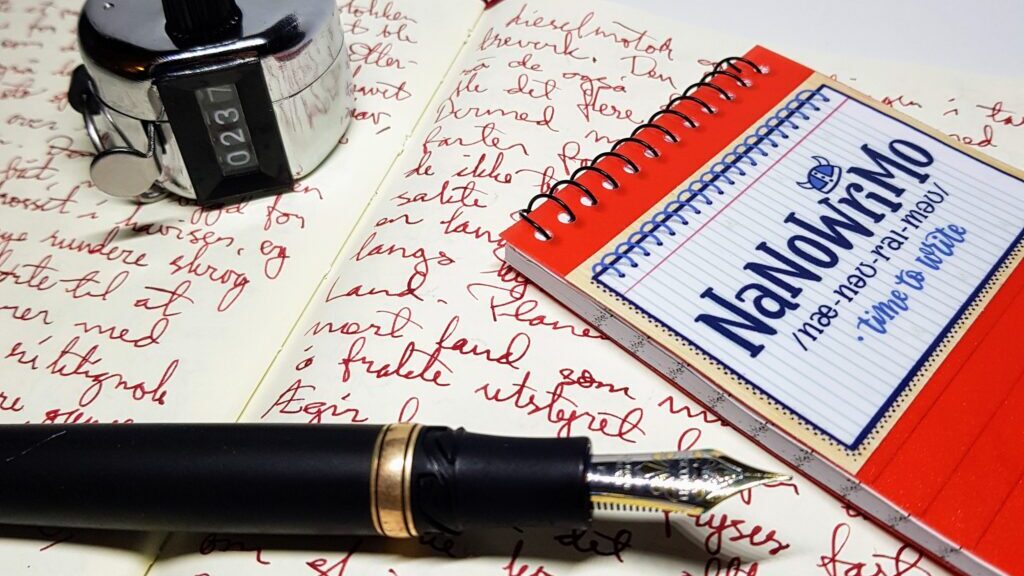
Nibby Sunday – Write a novel in a month!
For the past two years, I’ve had sub-optimal NaNoWriMo experiences. In both 2021 and 2022, I had a lot of other things to do before, and partly during NaNoWriMo, I wasn’t motivated, I didn’t have time to prepare well enough, and I didn’t have any good ideas for what to write about. This year, I am determined not to have a third NaNoWriMo in a row that turns out like this.
For those who don’t know what NaNoWriMo is: it stands for “National Novel Writing Month”, and is a challenge to write a first draft of a novel of at least 50,000 words within a month. NaNoWriMo happens in November every year, and has a few hundred thousand participants all over the world. You can find more information about it here.
My NaNoWriMo
My own history with National Novel Writing Month goes back to 2010, when I participated for the first time. That year I barely managed to get 50,000 words by the end of the month. Then I had a couple of years where I didn’t participate, but since 2013 I have hunkered down and written a poor excuse for a novel every single November, and made it every time. This year will be the twelfth time I participate in this madness.
NaNoWriMo is an excellent way to explore your own imagination. The whole concept is about pushing yourself further, plodding on, instead of stopping to work on the details. Quantity over quality. Stop caring so much about whether your writing is good or not, and instead make sure to get all the way through your story, and get your ideas down on paper. You can revise it later, if you wish, but not in November!
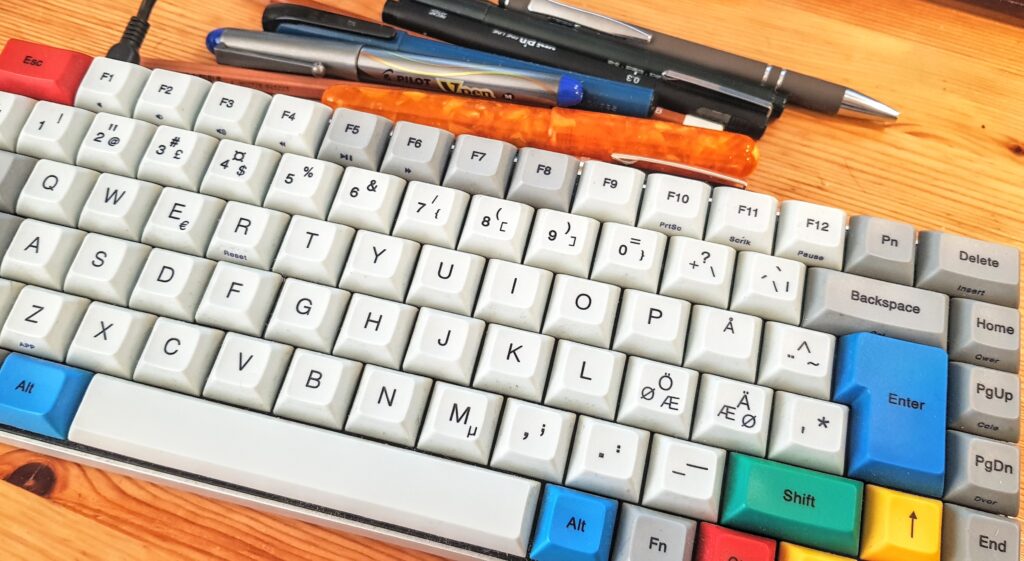
Personelly, I struggle staying focused through long-term projects, and I love this type of time-limited challenge. I am not participating in NaNoWriMo because I have goals of getting a novel published. I use this challenge to just play around with my own imagination and creativity. I’m not too concerned with the result, as long as I’m having fun along the way. Others may take it more seriously, and there are plenty of examples of published and acclaimed novels that started out as NaNoWriMo projects. What you want to get out of it is up to you, and only you.
For me, the last couple of NaNoWriMos hasn’t been as much fun as it used to be in the past. In both 2021 and 2022 I struggled to find good ideas. This year I’ve been determined to avoid that, and have been brainstorming story ideas steadily throughout most of the year to find something I like, a concept, a plot, and some characters that I want to write about. It’s only in the last month now that I’ve really found it, and now I have a fairly specific idea that I’m working on, and preparing until the actual writing starts on November 1.
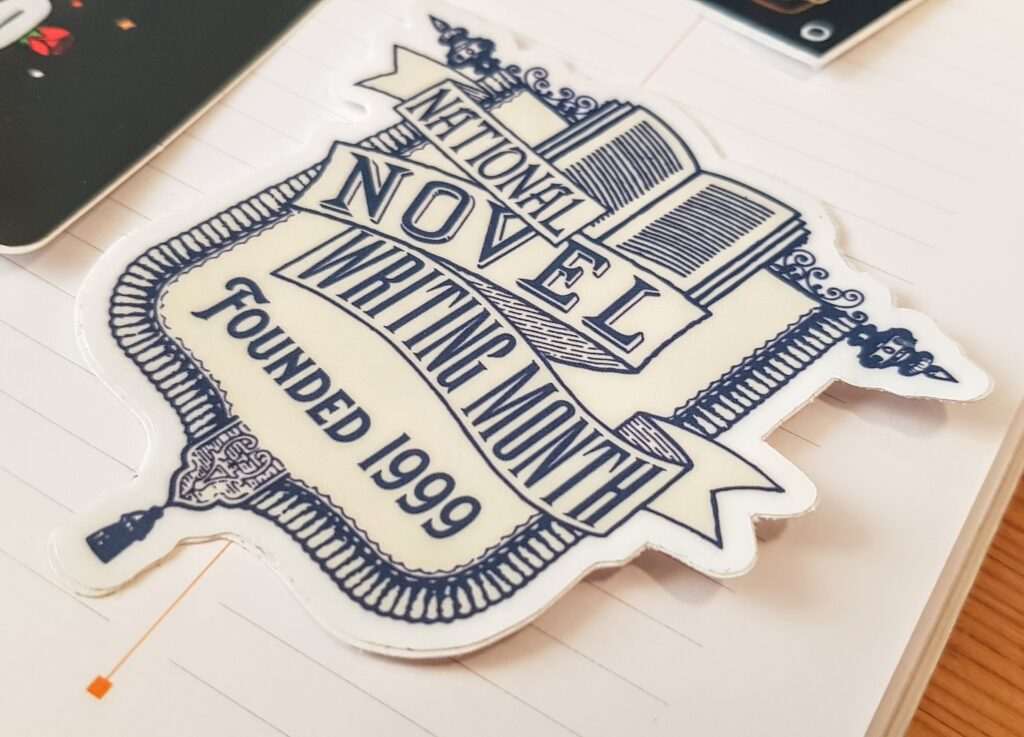
Extra challenges
After I did NaNoWriMo the first two or three times, I’ve often given myself some extra challenges, to get a slightly different experience of it, to make it a little more difficult for myself, to test different writing routines and ways of doing things, and not least to have some variation from year to year. Some examples: In 2015 I wrote 100,000 words during NaNoWriMo, and in 2019 I wrote 200,000. I have written the entire novel draft by hand a few times. The first time was in 2016, and then I did it again in 2018. In 2020, when we were shut down during the pandemic and I mostly just sat at home, I wrote 100,000 words by hand, which was a pretty solid challenge. In 2021, when I was struggling to find good ideas, I decided to try to write 50,000 words in one day (not by hand!) to see if I had it in me. I started at 2am with a blank Word document and a rather questionable plot idea, and 21 hours later I had written a ridiculously bad story of just over 50,000 words.
This year I will write by hand again, but I have no ambitions to repeat the 100,000 word challenge from 2020. I am happy as long as I pass 50,000 words. I may very well set a higher goal during the month, but I don’t think it will be as much as in 2020. However, I am thinking about trying to set a new personal record of handwritten words in one day. I wrote 13,000 handwritten words in one day back in 2018, and I think it could be possible to beat that this year. 15,000 words in a day should be manageable for me. Maybe even more.
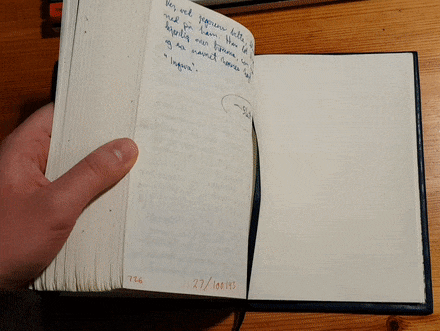
This year’s toolbox
I have a pretty complex concept in this year’s novel, which will probably jump back and forth a bit between different points of view. In the past, I’ve tended to use my pens quite randomly, but this year I will try to use a semi-deliberate color-coding system:
- Blue and purple inks are the ones I will use to write most of the book. They represent a 3rd person point of view.
- Brown and green inks indicate that the text is epistolary, i.e. in the form of letters, diary entries, e-mails, messages, logbooks and other cases where we are in the 1st person POV, seen through the eyes of one of the characters.
- Red and orange inks are notes to myself. Things that are not part of the text itself, but which I put in because I need to find things out for myself. It could be the inner thoughts or backstories of certain characters, which I as the narrator should know a lot about, even if I might only hint at it in the text itself. It can also be things like “while this is happening, this other thing is happening at the same time”, or “the reason why character A reacts this way in this situation is that…”.
I think this way of using ink colors can be useful. It will make it easier to see what’s what in the text, and will definitely make my job easier if I ever find myself revising my novel later. That’s probably doubtful, but you never know.
I’ll probably be using quite a few of my fountain pens over the course of the month, but I imagine the main workhorses will be the Leonardo Cuspide, ASC Gladiatore Medio and Onoto Magna. These three have very good nibs for long-form writing, as they are very smooth against the paper, and have excellent ink flow. The three pens are also very well balanced, and rests really well in my hand. I’ll also probably use a couple of my Conklin All American pens quite a bit.
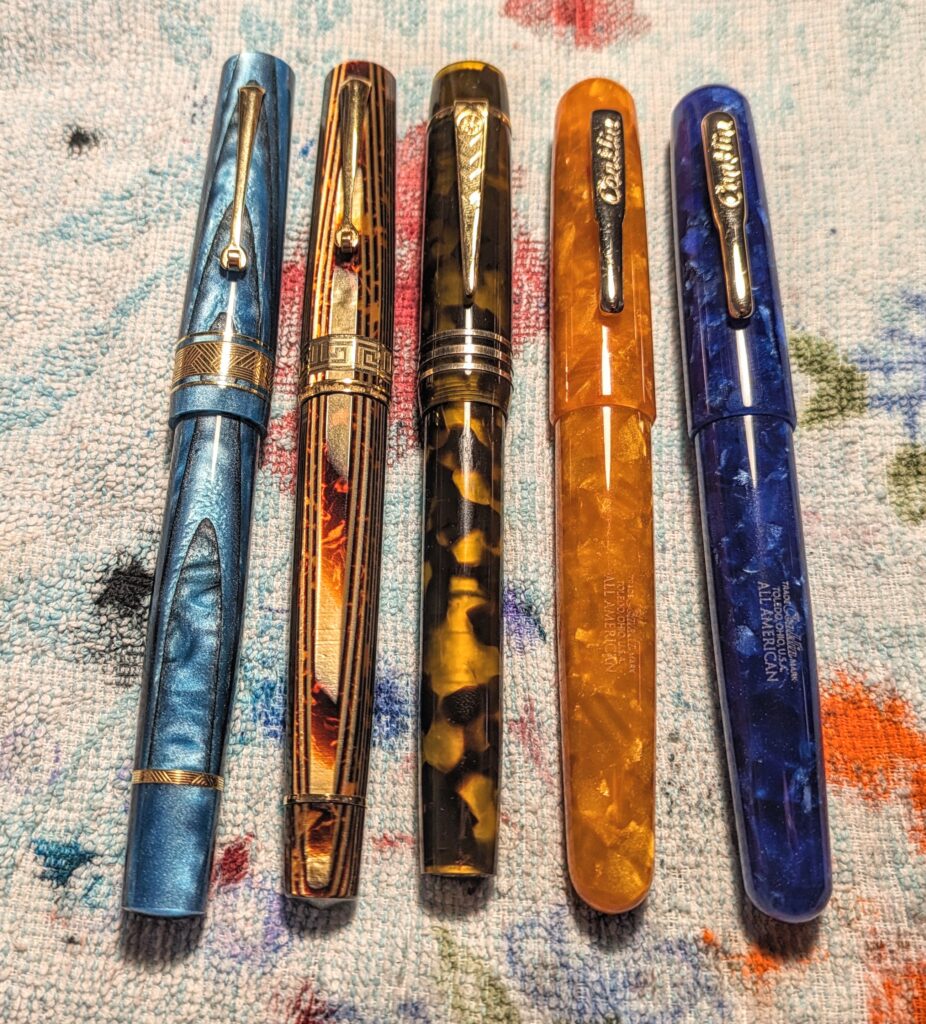
When it comes to the paper, I prefer to write on Tomoe River paper. I have three notebooks lying around that could work well for this project:
- Namami Crossfield (480 pages, 52 gsm, dots)
- Taroko Enigma (384 pages, 68 gsm, dots)
- Galen Leather Everyday Book (400 pages, 52 gsm, glossy pages)
All are A5 size, which is nice, but none of them are perfect. Ideally, I would have a book with a minimum of 400 pages of 68gsm cream colored paper, as 52gsm paper is a bit on the thin side. All of these have white paper, and not cream, but I can live with that. I’m not too fond of books with dots or lines. I prefer blank pages, especially for creative projects, and the only one of these that have that is the Galen Leather book. The fact that the book has blank pages is more important to me than the paper thickness. I also know that 400 pages should be enough for 50,000 words, and if I end up writing a lot more than that, I actually have two Everyday Books in my drawer, so if I have to split the story into two books, I have two of the same.
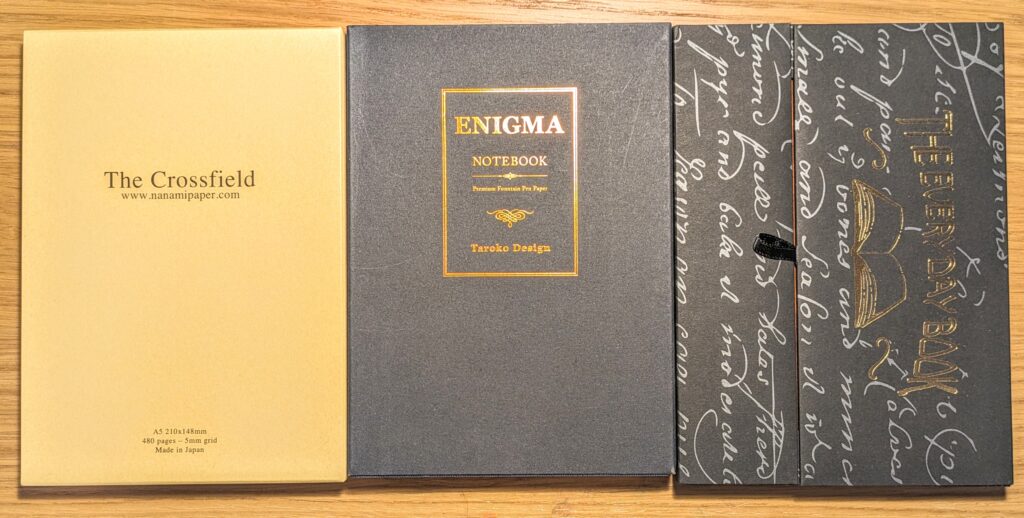
The last time I wrote by hand, in 2020, I used an absolutely gorgeous handbound Springback Journal from GatzBCN, with 800 pages of cream Tomoe River paper (albeit in 52gsm). It had room for all the 100,000 words I wrote, with 50-60 pages to spare. It was the ultimate NaNoWriMo notebook, and if I’d thought of it earlier, I would have ordered one this year as well. However, I didn’t think about it until September, and they have a minimum 12 week processing time as the book is hand made to order. In addition, it costs 170 euros. In my eyes, it’s well worth the money for what you get, but it’s undeniably a lot of money for a notebook. Maybe next year.
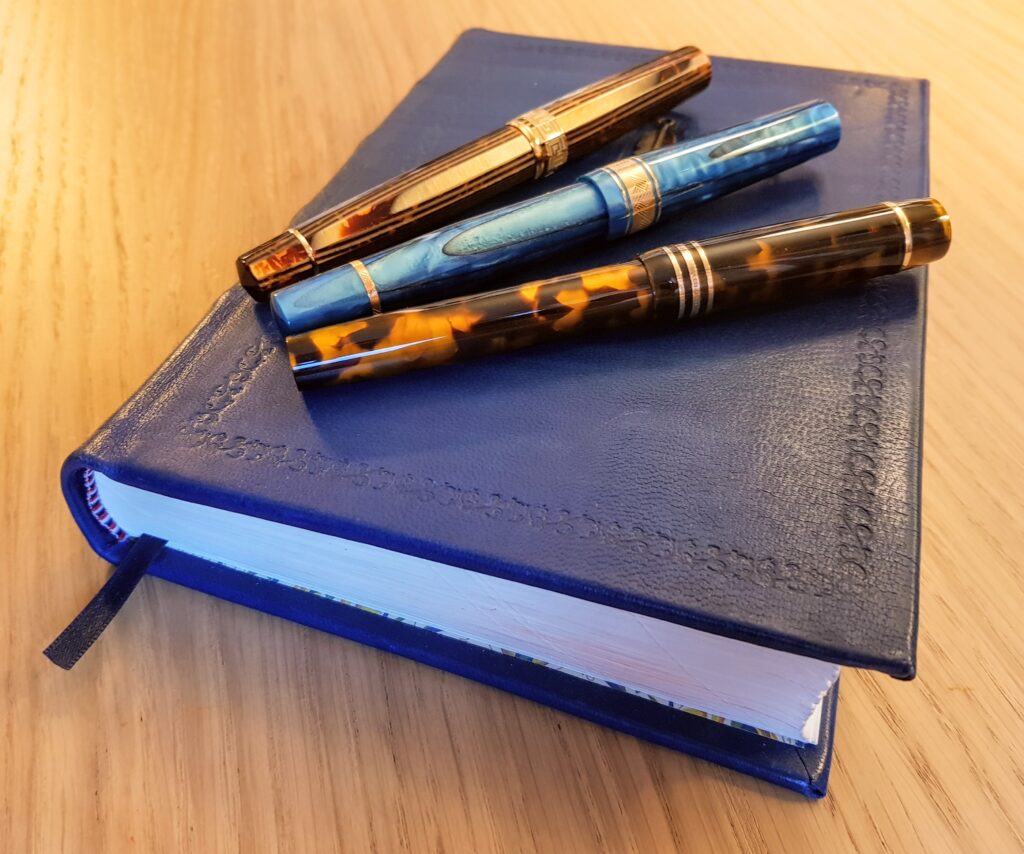
For plotting, idea development and general notes, I use an A5 Moleskine sketchbook. Moleskine is in many ways the industry standard for what a good notebook should be, but they’ve had a bit of a bad reputation in the fountain pen community, as the paper in their books has not been very well suited for fountain pens. However, it seems that they either use two different types of paper in their books, or that they have switched to a different type of paper in the last few years, because this book, which I bought about a year ago, works great with fountain pens! Even with the wetter pens, there’s no feathering or bleed-through. When I compare with a similar Moleskine book I have from 10-15 years ago, it’s obvious that they’ve done something with the paper, because in that book the ink bleeds through very quickly. This means that Moleskine is gaining ground as one of the very best alternatives on the market for “everyday notebooks”. And the best part is that you can get them practically everywhere.
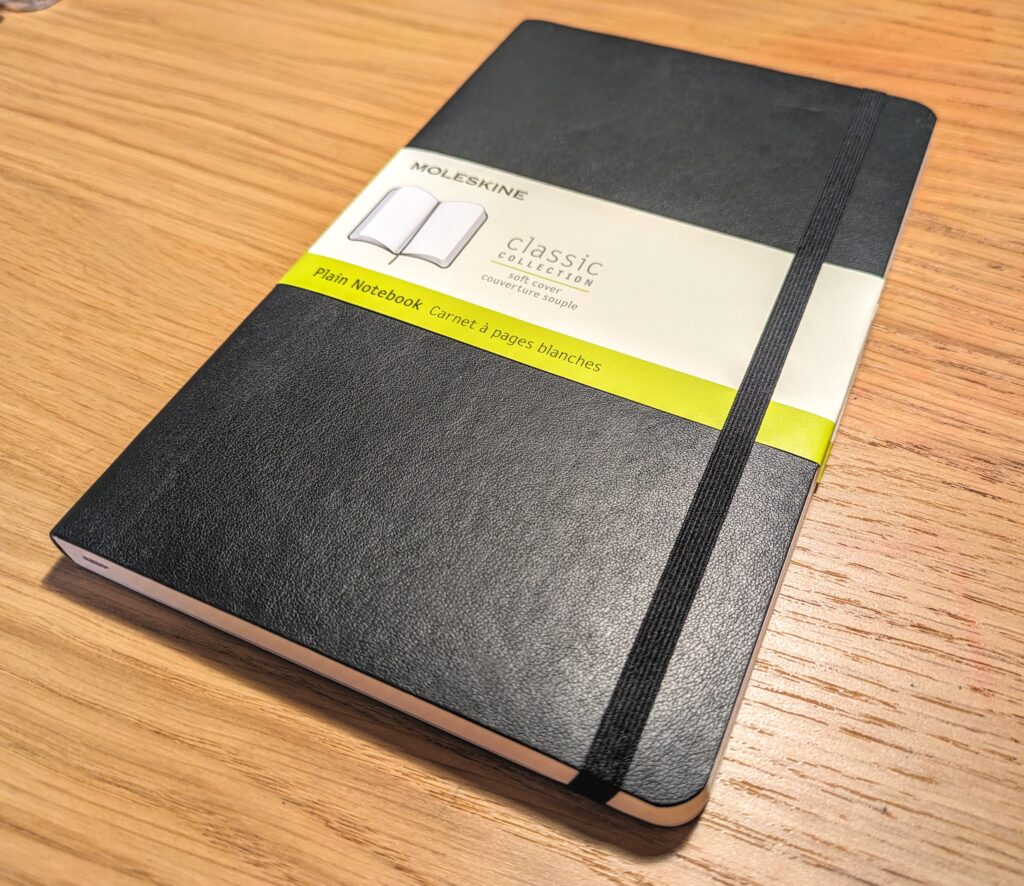
For me, NaNoWriMo has been one of the highlights of the year for the past ten years, and a tradition that has helped brighten up November, which can otherwise be a rather dark, cold and dreary month. I would encourage anyone who enjoys writing to give it a try. Imagine: a month and a half from now you could have written your first novel! Don’t wait! Create a user at nanowrimo.org today, and sign up for this year’s National Novel Writing Month!
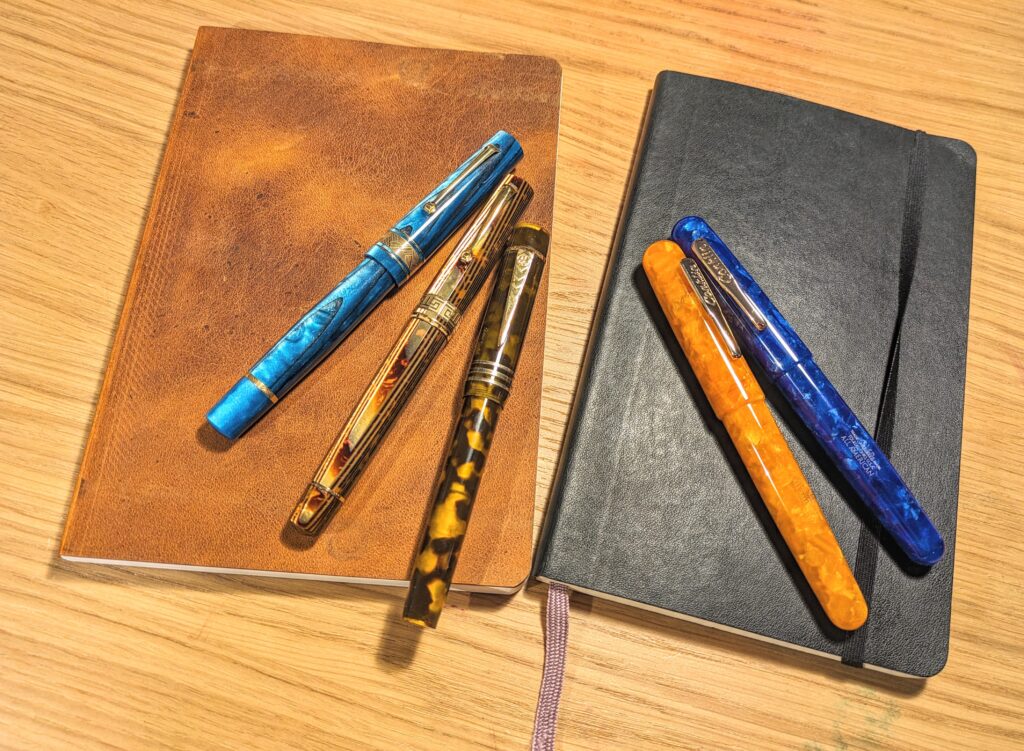
One thought on “Nibby Sunday – Write a novel in a month!”